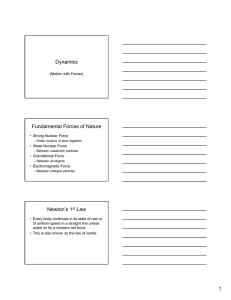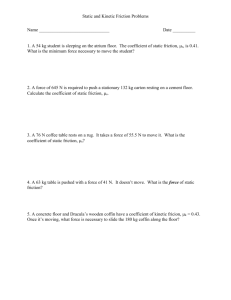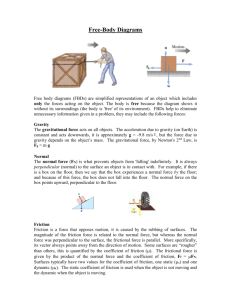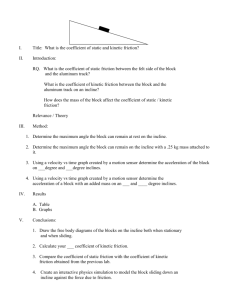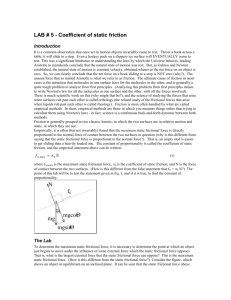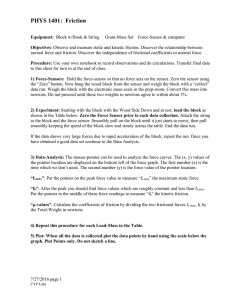Coefficient of friction lab.
advertisement
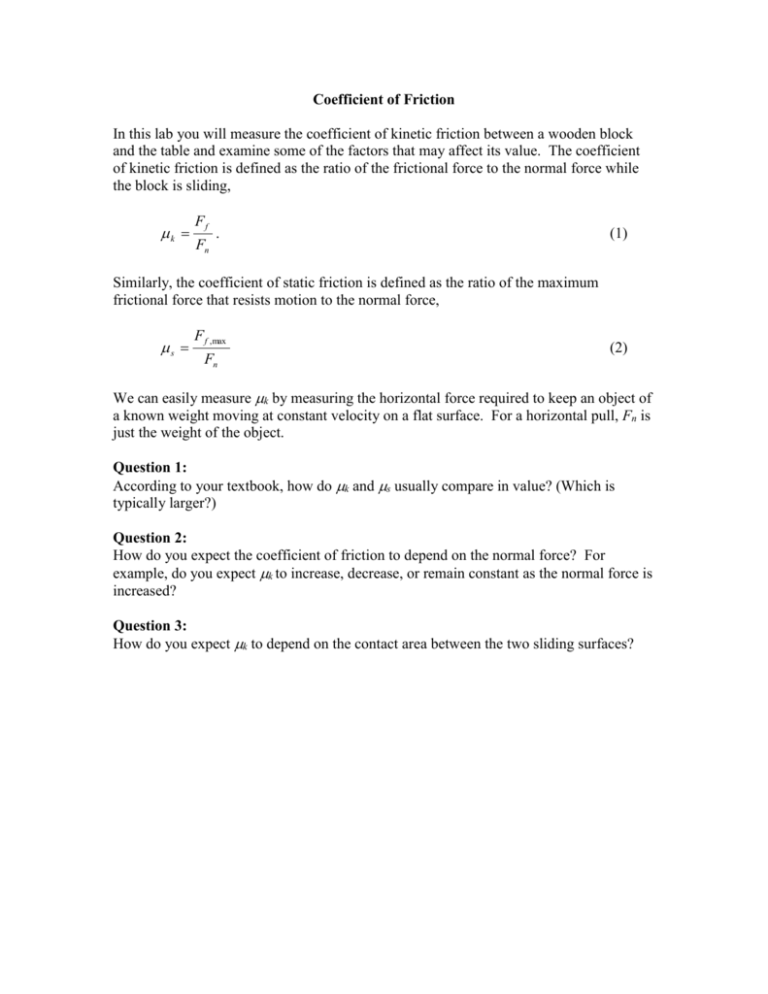
Coefficient of Friction In this lab you will measure the coefficient of kinetic friction between a wooden block and the table and examine some of the factors that may affect its value. The coefficient of kinetic friction is defined as the ratio of the frictional force to the normal force while the block is sliding, k Ff Fn . (1) Similarly, the coefficient of static friction is defined as the ratio of the maximum frictional force that resists motion to the normal force, s F f ,max Fn (2) We can easily measure k by measuring the horizontal force required to keep an object of a known weight moving at constant velocity on a flat surface. For a horizontal pull, Fn is just the weight of the object. Question 1: According to your textbook, how do k and s usually compare in value? (Which is typically larger?) Question 2: How do you expect the coefficient of friction to depend on the normal force? For example, do you expect k to increase, decrease, or remain constant as the normal force is increased? Question 3: How do you expect k to depend on the contact area between the two sliding surfaces? Experiment: Place a mass of a 0.2 kg on the block. . First, place the wooden block on the table with the largest area felt side facing down. Attach the force sensor to the block with a string. Use Data Studio to look at the force as a function of time. Gradually pull until the block starts moving and then continue pulling to keep the block moving at a constant speed. Do this carefully enough to see how the force changes just before to just after the block starts moving. Add a mass to the block and repeat. Do this for 4 different masses up to 1 kg. Now repeat using the small (edge) area of the block that has the felt. Using Excel, on a single graph plot the frictional force, both the maximum static frictional force and the dynamic frictional force (force sensor measurement). Plot these as a function of the normal force (weight of block and added mass) for the large surface and for the small surface, respectively. Thus four data sets in one graph. Question 4: From your first measurement, what do you conclude about the relative values of k and s. Is this in agreement with your answer to Question 1? Question 5: Look at your graphs of Ff versus Fn. Are they in agreement with your answer to Question 2? Explain. Question 6: From the slopes of your curves, determine the static and dynamic coefficients of friction for the large surface and for the small surface. Was your response to Question 3 correct? Turn in: One print-out of original DataSudio data (force as a function of time) The Excel graph with four data sets. Answers to all questions.



